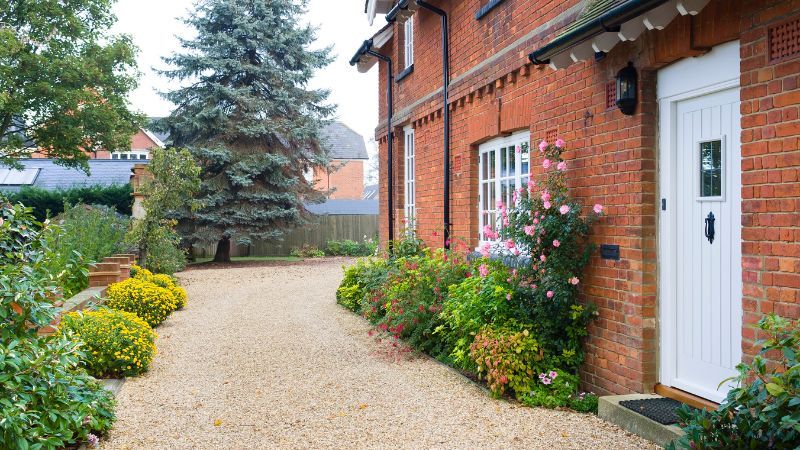Categories
How to Use a Bridging Loan to Buy a House in London

Getting on the property ladder in the capital can be challenging - but did you know you could use a bridging loan to buy a house in London?
The London property market is notoriously competitive, so when you find the perfect home, you need to move fast - this is where bridging finance comes in.
A bridging loan can allow you to raise the money you need to purchase a house quickly so you don’t miss out. Depending on the complexity of your case, we can raise bridging finance in a matter of weeks or even days if your situation calls for it.
However, many London property buyers are unfamiliar with bridging loans and how they work. So, in this guide, we explain everything you need to know about using a bridging loan to buy a house in London.
And we include lots of recent case studies along the way so you can see real-life examples of how the process works.
Written by: Sam O'Neill & Sam Hodgson
Skip to:
What are bridging loans used for?
How can you get a bridging loan for London property?
How much do bridging loans cost?
Get a London bridging loan quote
Why use a bridging loan to buy a house in London?
There are several common reasons you'd use a bridging loan to buy property in London. Generally, these can be broken down into three main categories:
- When you don't have enough time to apply for and secure a mortgage, e.g. when buying at an auction, there is a 28-day limit to complete the purchase.
- If the property is unmortgageable, e.g., it has no working kitchen and bathroom or needs significant renovation work.
- You already have a residential mortgage on a property that you can't (or prefer not to) sell before purchasing your new property, e.g. if you find a perfect house to buy, but your current home is taking a while to sell.
Regulated bridging loans can often be agreed upon within days, meaning you can act fast and then take your time with refinancing later, either by selling another property or getting a standard mortgage.
If you're looking to buy investment property in London, such as a buy to let, it's likely you will need an unregulated bridging loan.
Related: How to find the best bridging loans
How bridging loans for property work
A bridging loan works like a mortgage but with some key differences:
- Like a mortgage, bridging finance is usually secured on the property you are using to buy; however, a bridging loan can also be secured on an additional property or deposit (for example, the one you're selling), allowing you to borrow more or get a better interest rate.
- A bridging loan can also be arranged much faster than a mortgage: within weeks, or even days.
- You can borrow against an uninhabitable property that mortgage providers won't lend against. Then, you can renovate and refinance once it's ready for a standard mortgage.
The amount you can borrow will depend on the property's value, any renovation costs you may have, and the potential value of the property once improved (where applicable).
Most bridging loans are for a term of 12 to 18 months, so much shorter than a standard mortgage. This is why you need an exit strategy in place.
You don't repay bridging loans monthly as you do with a mortgage. Instead, you repay the balance in full when you have the funds available from your exit strategy (e.g., selling another property or getting a mortgage).
Even the interest you owe can be rolled up and repaid at term as opposed to on a monthly basis.

Sam O'Neill
Head of Bridging
Let us do all the hard work of finding the right bridging lender for your circumstances.
We secure bridging finance for applications of all types, and we negotiate competitive lending to meet your needs and timescale.
For a quick quote, try using our bridging loan calculator below:
How to get a bridging loan to buy a house in London
Bridging finance is usually only offered by private banks and lenders or by dedicated subsidiaries of high street banks. All of these are generally available through specialist finance brokers.
The lending criteria for bridging loans are usually more flexible than mortgages, meaning that issues such as complex income streams, credit score or non-UK residency will not necessarily be an issue as they might be for a high street mortgage.
Related: How to buy an unmortgageable property
The cost of bridging loans for London property
When you take out a bridging loan, there are three costs you generally need to think about:
- Arrangement fees (typically 1-2% of the capital, paid when your first take out the loan)
- Interest (usually paid monthly or rolled up and paid as a lump sum when your loan is repaid)
- Exit fees (not charged by all lenders, but also generally 1-2% of the capital where they apply)
These costs vary from lender to lender, so it is good to work with a whole of market broker who can find you the best deals from across the market.
Watch our video below for an example of how to fix a broken property chain with a bridging loan:
Related: Our full bridging loan services & guide.
Get a bridging loan to buy a house in London
Are you looking for a bridging loan to buy a London property? At Clifton Private Finance, we have an award-winning bridging team dedicated to getting the best results.
Our team of experienced specialist bridging loan brokers have access to all the leading lenders so that we can offer you the most attractive deals on the market.
We can help you get the best deal available using a wide range of contacts throughout the bridging finance industry. We can also assess your situation and make sure you're getting the right product for you.
You can quickly get the money you need to buy your London property at an affordable rate and with minimal fuss.
Bridging advice gives you peace of mind you're making the right financial decision for your situation.
We can give you a clear idea of your options and guide you through the bridging process, including finding tailored finance solutions.
To see what we can do for you, call us at 0117 959 5094 or book a consultation below.


FAQs
Yes, a valuation is typically required for a bridging loan in the UK. Since bridging loans are often secured against a property or other valuable assets, lenders will want to assess the market value of the property being used as security. This helps the lender determine how much deposit they want you to provide based on the value and condition of the property. You can borrow up to £25m with bridging finance, but it’s typically capped at about 80% of the value of the property you’re using as security. It's important to note that different lenders have varying policies and criteria regarding the maximum loan amounts they offer for bridging finance. Some lenders have a maximum limit of over £1 million, while others may specialize in smaller loan amounts. Additionally, the terms and conditions of the loan, including interest rates and fees, should also be taken into consideration when determining the overall affordability of the bridging loan. Yes, you typically need a 20-40% deposit for a bridging loan. It can be possible to get a bridging loan without a deposit (a 100% bridging loan), but you’ll need other assets in the background to secure the loan against, and more stringent criteria and higher costs could apply. Yes, it is possible to get a 100% bridging loan (also known as a 100% LTV bridging loan), but it is rare. This means that you won’t need to put down a deposit and can borrow the full value of your property. However, the criteria for these loans can be hard to meet, and you’ll need to provide additional assets as security for your loan. Interest rates and fees can also be higher to compensate. While using bridging finance doesn’t technically make you a cash-buyer, it can allow you to act like one. Mortgages take months to process, often leading to an ‘onward chain’ where all parties involved need to wait for funds to be transferred. Bridging finance can usually be accessed a lot quicker than mortgages so you can bypass the onward chain, giving you an advantage over other buyers and being attractive to sellers. Bridging loans typically have a term of 12 months, but some lenders are willing to stretch their terms to 18 months, or even 2 –3 years depending on the case. Terms longer than 2 years will usually only be considered for specific cases. Yes, you can use a bridging loan to pay Stamp Duty. This amount could be covered by a bridging loan, providing you have a way to repay the additional borrowing amount to your lender. Yes, bridging loans are safe when they’re used in the right circumstances with a solid repayment strategy. However, we recommend speaking to a qualified advisor, like our brokers at Clifton Private Finance, before you take out a product. The main factors to consider with bridging finance are that the full loan amount will usually need to be repaid within a year, and like a mortgage, it is secured against a property as collateral. This means that in the case that you aren’t able to repay your bridging loan, your property would be at risk of repossession. But with a watertight exit strategy, bridging finance can be an efficient way to secure property quickly. Bridging loans are designed to be short-term so there’s no maximum age limit when applying for a bridging loan. This does depend on the lender, as some bridging lenders do have an upper age limit, but there are lenders on the market who offer bridging loans for borrowers aged 70 and over. Bridging loan interest rates usually range between 0.45% - 2% per month, depending on the case and the market rate. Unlike mortgage interest rates, bridging loan interest is calculated monthly instead of yearly. This is because bridging loans are short-term and, in many cases, repaid within a year. Bridging loans can be arranged without early repayment penalties, so interest is calculated monthly to ensure you only pay interest on the months you have the loan for. Unfortunately, mainstream banks in the UK don’t offer bridging loans. This means that if you’re looking for a bridging loan, you won’t be able to get one using a lender you’d find on the high street. There are a variety of specialist lenders that offer bridging loans, but because these lenders are smaller and more niche, you may need a bridging broker to access them. Banks typically charge two main fees when taking out a bridging loan – arrangement fees and interest. But there are other costs to consider such as valuation fees, broker fees and administration fees. Costs can vary from lender to lender, and will also depend on what your bridging loan is for (e.g., residential or commercial purposes.) Arrangement fees are what the lender charges you to take out the loan and can range between 1.5 - 3% of your overall loan. Bridging loan interest, on the other hand, is calculated monthly. This can catch borrowers out who may be expecting an Annual Percentage Rate (APR) like with a mortgage. Yes, you can convert a bridging loan to a mortgage through refinancing, and it is common among borrowers who use bridging finance to buy residential properties. However, whether or not you’ll be able to refinance to a mortgage is dependent on your financial circumstances, the lender, and the property you’re planning to buy. It’s important to be sure that refinancing is a viable repayment option before you take out a bridging loan on a residential property. Yes, bridging loans are typically more expensive than mortgages. Bridging loan interest rates can be much higher than a mortgage, and are calculated and displayed as monthly rates instead of the usual annual percentage rate (APR) that you’ll see on a mortgage. However, bridging loans are a short-term solution, and you’ll only pay interest on the months you’ve borrowed money for – and you can repay early without any charges (for most loans). There are many circumstances where bridging loans are an affordable option and a means to an end - for borrowers that need to finance a property purchase quickly, it may be the only option available. The two most common ways to pay a bridging loan are to sell a property or refinance to a mortgage. You may also need to ‘service’ the loan through the term, which means paying the interest monthly. However, you can opt to ‘roll up’ your bridging interest to be repaid at the end along with the capital. There are also other ways to repay a bridging loan, such as selling a business or even using money from an inheritance. The method in which you pay your bridging loan can be flexible, just as long as it is clear in your application that you have a surefire way to repay your loan when the terms are up. In most cases, a bridging loan will require a minimum deposit of 25%. However, the minimum can vary depending on the lender and the specific circumstances of the loan itself. Generally, bridging loans are secured against a property or other valuable assets, and the deposit required is often expressed as a percentage of the property's value, known as the loan-to-value ratio. In some cases, 0% deposit bridging loans are an option, but only if you have other property or assets in the background to provide additional security. No, typically, you’ll repay a bridging loan in one chunk at the end of the loan term. Bridging loans are a form of short-term finance and will usually need to be repaid within 12 months, but there can be room for flexibility. In some cases, borrowers may be required to make monthly interest payments. This means that each month, you would pay the interest accrued on the loan amount while the principal amount remains outstanding until the end of the loan term. But usually, the interest is "rolled up" or added to the loan balance and paid with the rest of the loan at the end of the term. This option can help protect your cashflow so you can spend it on moving costs or refurbishments, for example. Bridging loans can be arranged in as little as 7 working days. However, it depends on the complexity of the bridge loan and your specific circumstances. It may also be more expensive for you to rush an urgent application through – but not impossible. Bridging loans are a popular option for borrowers who are under time constraints, such as buying a property at auction or breaking a chain. The key factors lenders tend to consider are: Security - Bridging finance is usually secured against property or other valuable assets. Lenders will assess the value and marketability of your security. Exit Strategy - Lenders will want to understand how you plan to repay your bridging loan. In most cases, this is selling your old property, selling the new property (flipping), or refinancing with a long-term mortgage. Loan-to-Value (LTV) Ratio - Lenders consider the loan amount compared to the value of the property being used as security as a percentage. The LTV ratio can vary, but most lenders will have a maximum of 60-80% LTV. Remember, the criteria for obtaining bridging finance in the UK can vary depending on the lender and your circumstances.
Do you need a valuation for a bridging loan?
How much can you borrow with bridging finance?
Do you need a deposit for a bridging loan?
Can I get 100% bridging finance?
Does a bridging loan make you a cash buyer?
What is the longest bridging loan term?
Can I use a bridging loan to pay stamp duty?
Are bridging loans safe?
Can an 80 year old get a bridging loan?
What is the monthly interest rate on a bridging loan?
Do banks still do bridging loans?
How much do banks charge for bridging loans?
Can you turn a bridging loan into a mortgage?
Is a bridging loan more expensive than a mortgage?
How are bridging loans paid?
What is the minimum deposit for a bridging loan?
Do you pay monthly payments on a bridging loan?
How long does it take for a bridging loan to come through?
What is the criteria for bridging finance?











